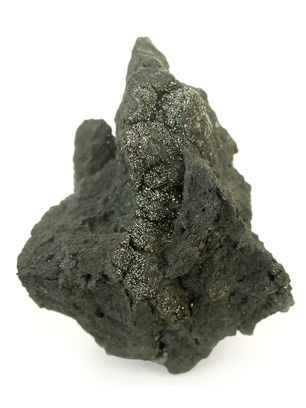Arsenic
| EPA Maximum Contaminant Level (MCL) |
0.010 mg/L |

Arsenic is an elemental semi-metal found naturally in rocks, minerals and ores. It's used in a wide range of industries, including electronics, glass processing, and the production of pigments, textiles, paper, ammunition, pesticides and pharmaceuticals. Its most common use in the United States is as a wood preservant.
Arsenic can arrive in drinking-water through industrial and agricultural run-off, but it is most likely to arrive through natural contamination of groundwater. Human exposure can also occur through food, especially fish and meats.
In groundwater, arsenic usually occurs in two forms: trivalent arsenic (As+3, or arsenite) or pentavalent arsenic (As+5, or arsenate). Both are harmful to humans, but trivalent arsenic is more harmful and more difficult to remove from water. As+3 can be converted into pentavalent arsenic in the presence of an effective oxidant such as free chlorine. Treatment with chloramines, however, will not ensure a complete conversion of trivalent arsenic to pentavalent arsenic.
Health Effects of Arsenic
Acute exposure to arsenic can cause symptoms of vomiting, diarrhea, muscle pain, weakness, abdominal pain and flushing.
Long term exposure has been shown to cause skin changes, nerve and cardiovascular damage, developmental problems, and diabetes. Arsenic is also a known human carcinogen, with evidence showing that it can cause cancers of the skin, bladder, kidney and lungs.
Water Treatment for Arsenic
Arsenic is most effectively removed from water by ion exchange, reverse osmosis, and distillation.
“Filtration through activated carbon will reduce the amount of arsenic in drinking water from 40-70%. Anion exchange can reduce it by 90-100% Reverse Osmosis has a 90% removal rate, and distillation will remove 98%. If the arsenic is present in organic form, it can be removed by oxidation of the organic material and subsequent coagulation.” — Enting Corp. Engineering Handbook.
Current technology suggests that several techniques may be used for removing arsenite, arsenate, and organic forms of arsenic from drinking water including activated carbon filtration, submicron filtration, anion exchange, distillation, and reverse osmosis. Arsenic in colloidal form can be removed by sub-micron filtration or solid block and precoat adsorption filters. Also effective: weak and strong base anion exchange resins (90 to 100 percent removal), Distillation and reverse osmosis are effective to 90% plus reduction. Deep backwashable beds of granular activated carbon can be 40 to 70 percent effective. — WQA Technical Bulletin
Sources: EPA, WHO, Enting Corp. Engineering Handbook, and Water Technology Magazine, Volume 31, Issue 11 - November 2008, Photo: Rob Lavinsky, iRocks.com
Site Index
Filtration Systems
- Aeration for Iron & Sulfide
- Backwashing Filters
(whole house & well units)
- Chlorine & Chemical Injectors
- Countertop Water Filters
- Garden Hose Filters
- Reverse Osmosis, Residential
- Reverse Osmosis, Commercial
- Shower Filters
- Specialty Filters
- Ultraviolet Systems
- Undersink Filters
- Water Softeners
- Whole House Filters
Cartridges
Parts
- Replacement Parts
- Faucets
- Filter Media
- Fittings
- Housings
- O-rings
- Pumps
- Pura UV
- R.O. Parts
- R.O. Tanks
- R.O. Booster Pump
- VIQUA UV